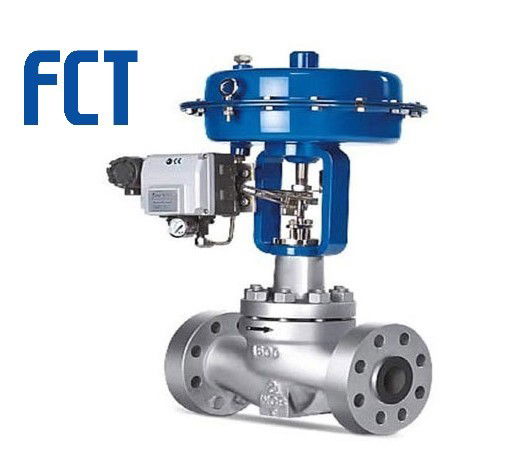Important Variables to Take Into Consideration When Picking Control Valves
Important Variables to Take Into Consideration When Picking Control Valves
Blog Article

Maximize Energy Cost Savings and Convenience With Advanced Structure Automation Controls
In the world of modern architecture and center monitoring, the integration of sophisticated structure automation regulates stands as a crucial improvement. By utilizing the power of automation, structures can adapt, react, and evolve in ways that were once unimaginable.
Energy Performance Benefits
Power performance benefits can dramatically decrease energy intake and operational expenses in buildings. By carrying out energy-efficient practices and modern technologies, building owners and drivers can attain considerable financial savings while additionally adding to ecological sustainability. One of the main advantages of boosting power efficiency in structures is the decrease of utility bills. Energy-efficient systems, such as innovative building automation controls, can enhance making use of sources like illumination, home heating, and air conditioning, bring about lower power expenses gradually.
Furthermore, boosted power efficiency can lengthen the life-span of building equipment and systems. By running much more efficiently, HVAC systems, lighting fixture, and various other building components experience much less deterioration, causing lowered maintenance and substitute costs. Additionally, energy-efficient buildings often command greater building worths and rental rates, providing lasting economic advantages to owners.
Additionally, energy effectiveness can boost occupant convenience and productivity. Appropriately managed interior atmospheres with ideal illumination and thermal conditions create an even more pleasurable and favorable work area, resulting in improved employee contentment and efficiency. Overall, the energy performance advantages connected with advanced structure automation controls are multifaceted, encompassing expense financial savings, ecological stewardship, and occupant health.
Enhanced Convenience Control
Enhancing convenience control in structure settings requires an advanced assimilation of innovative automation systems for optimal resident health. By utilizing sophisticated building automation controls, facilities can customize the interior setting to fulfill the specific demands and choices of passengers. These systems allow precise policy of temperature level, illumination, and ventilation, developing a productive and comfy environment. Occupant complete satisfaction and productivity are closely connected to thermal comfort, making it important to have systems in place that can adjust to changing conditions in real-time.
By incorporating these innovative controls, structures can not just improve convenience yet likewise improve power effectiveness by optimizing system procedures based on real tenancy and use patterns. Eventually, prioritizing passenger comfort with advanced automation systems leads to an extra enjoyable and healthier interior setting.
Operational Effectiveness Improvements

Additionally, the execution of real-time tracking and analytics tools allows structure drivers to recognize power inefficiencies and operational anomalies promptly. By continually keeping an eye on energy usage patterns and system efficiency metrics, changes can be made in real-time to enhance energy intake and guarantee peak operational performance. control valves. Additionally, integrating demand action approaches right into building automation controls can additionally boost functional efficiency by dynamically changing energy use based on grid problems and rates signals
Indoor Environment Optimization
Effective interior environment optimization is a fundamental aspect of building explanation automation controls, guaranteeing passengers' convenience and well-being while optimizing energy financial savings. By utilizing advanced sensors and controls, developing automation systems can continuously keep an eye on and change temperature, humidity degrees, air high quality, and air flow to produce an ideal indoor setting. Preserving constant and comfy conditions not just boosts resident fulfillment however additionally enhances productivity and total well-being.
Indoor climate optimization also plays an essential role in energy performance. By fine-tuning heating, air conditioning, and air flow systems based upon real-time data and tenancy patterns, building automation controls can substantially decrease power intake - control valves. Implementing strategies such as demand-controlled air flow and thermal zoning can help lessen energy waste while making certain that each area of the building obtains the required conditioning.

Sustainable Atmosphere Production
Building automation manages not only enhance indoor climate conditions for energy efficiency and resident comfort yet likewise lay the foundation for developing a sustainable environment through calculated monitoring of sources and systems. By integrating advanced structure automation innovations, such as sensing units, actuators, and smart software application, centers can keep track of and adjust energy usage in real-time to reduce waste and minimize their carbon footprint. These systems allow predictive upkeep, identifying potential issues prior to they intensify and enhancing tools performance to improve longevity and performance.
Furthermore, sustainable setting production extends past energy management to encompass water preservation, waste decrease, and interior air high quality improvement. Structure automation controls can control water use, discover leaks, and make sure correct waste disposal practices, adding to overall sustainability this efforts. Furthermore, by regulating and keeping an eye on air flow and filtering systems, these innovations enhance resident health and productivity while reducing power intake linked with cooling and heating operations.
Verdict
Finally, advanced building automation regulates offer substantial advantages in terms of energy cost savings, comfort control, functional performance, interior environment optimization, and creating a lasting atmosphere. By executing these controls, structures can achieve optimum efficiency while lowering power consumption and enhancing passenger convenience. It appears that the use of sophisticated automation innovation is vital in improving building performance and creating a more sustainable future.
Energy efficiency advantages can substantially reduce power consumption and functional costs in structures. In general, the power performance advantages associated with innovative structure automation controls are multifaceted, including price savings, environmental stewardship, and occupant wellness.
Additionally, incorporating need action methods into structure automation controls can further improve functional efficiency by dynamically adjusting energy usage based on grid problems and pricing signals.
Building automation controls not just optimize indoor environment conditions for energy try here effectiveness and passenger comfort however additionally lay the structure for developing a sustainable setting via strategic administration of systems and resources.In verdict, advanced building automation regulates deal considerable benefits in terms of energy savings, comfort control, functional performance, interior environment optimization, and developing a lasting atmosphere.
Report this page